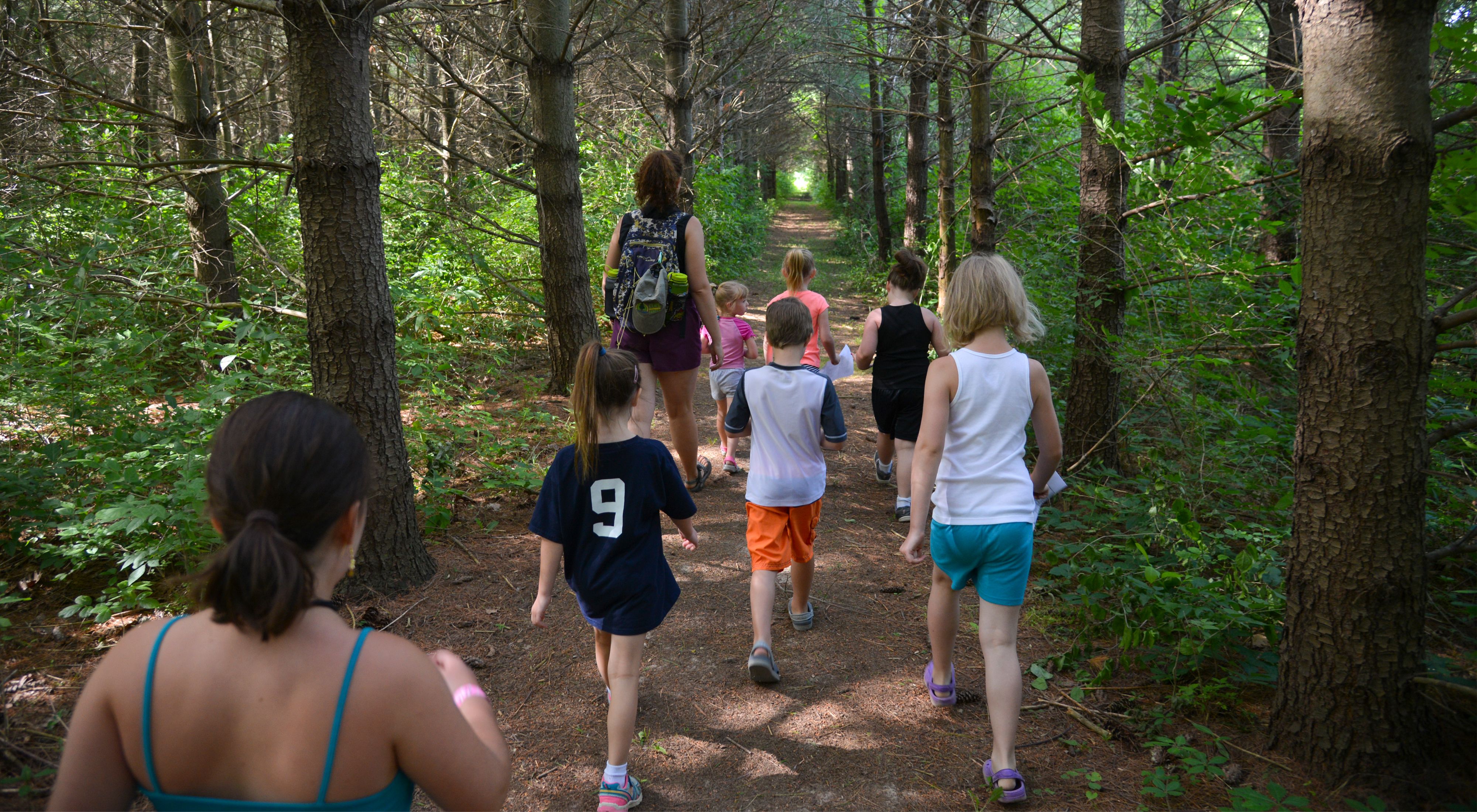We’re taking kids to an amazing new place. It's called outside.
What is the Children of Indiana Nature Park?
You won’t find a swing set or slide at the Children of Indiana Nature Park. Instead, the trails at the Park provide opportunities to see and enjoy plants, birds and other creatures. And unlike playground parks, this park provides every student in Indiana with a deed to a piece of this special place.
This “Nature IN-Deed” invites young Hoosiers to think of themselves as little landowners and to learn to care for their land.
Getting Kids in Nature
Wanna get your kids into the great outdoors, but not sure how?
Check out our new guide!Kids today are spending less time outdoors than their parents or grandparents. Busy schedules, urban settings and digital devices often win out over nature for a child’s attention. The Children of Indiana Nature Park uses technology to invite youth to care for nature. The 30-acre Park in Centerville, Indiana, was given to all K-12 Hoosier students in honor of Indiana’s 200th birthday, and each student can claim a deed to their place in the Park. This gift of a nature park invites Hoosier kids to learn about the wonders of our natural world and to care for their land.
This website provides resources for youth, parents and teachers to help connect children with nature.
The Children of Indiana Nature Park is located on the Cope Environmental Center property in Centerville, Indiana.
If you are a teacher or a group leader, these inspirational words will help you introduce the deed and why it is so special.
What Does it Mean to Have a Nature IN-Deed?
Every Nature IN-Deed holder has claim to a spot in the Children of Indiana Nature Park. This means each student with a deed will have “claim” to a spot in the Park that can be visited in person or virtually on the internet. Once you have the deed, it is yours to hold on to and pass it down to younger siblings or even future children so generations to come will continue to have this special connection with nature.
Once your kids have a Nature IN-Deed, display it proudly or put it to work! You can frame your deed and hang it up to show it off, stick it on your fridge as a reminder to learn more about nature and even use the coordinates to find your county’s designated spot when you visit the Children of Indiana Nature Park.
Send us your photos of how you display or use your deed to childrenofindiananaturepark@tnc.org and you could end up on our webpage or social media!
A Nature Park
You won’t find a swing set or slide at this park. Instead, the trails at the Children of Indiana Nature Park provide the opportunity to see and enjoy plants, birds and other creatures. And unlike playground parks, this park is providing every student in Indiana with a deed to a piece of this special place. This “Nature IN-Deed” invites your young Hoosier to think of themselves as little landowners and to learn to care for their land.
How do you learn to care for your land? (Hint: You don’t need to be at the Children of Indiana Nature Park!)
Start by being an observer. Whether you are in the city or in the country, take a look around you and notice what you see!
Look up to see what might be near the treetops or on the power lines. Look down and notice the soil, wildlife footprints, plants or animals. Take pictures or notes about what you see. Later on, you might be able to identify it. If you know what it is, you can learn what it needs and how to care for it.
Use the slider on the illustration below to observe nature in both a forest and a park! What differences do you see? What is the same?
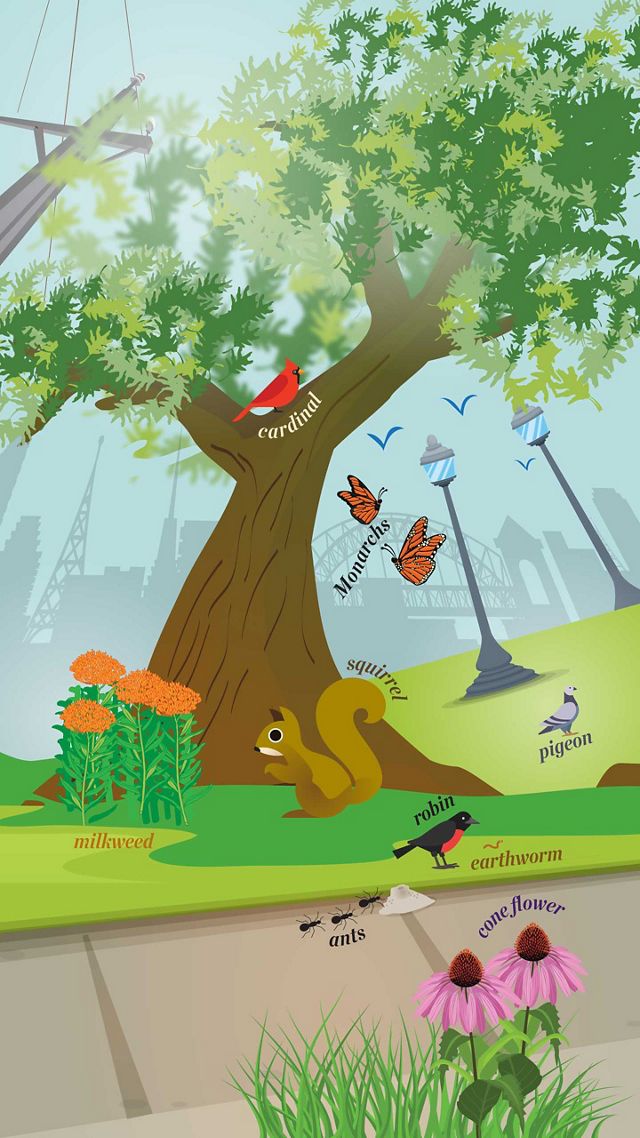
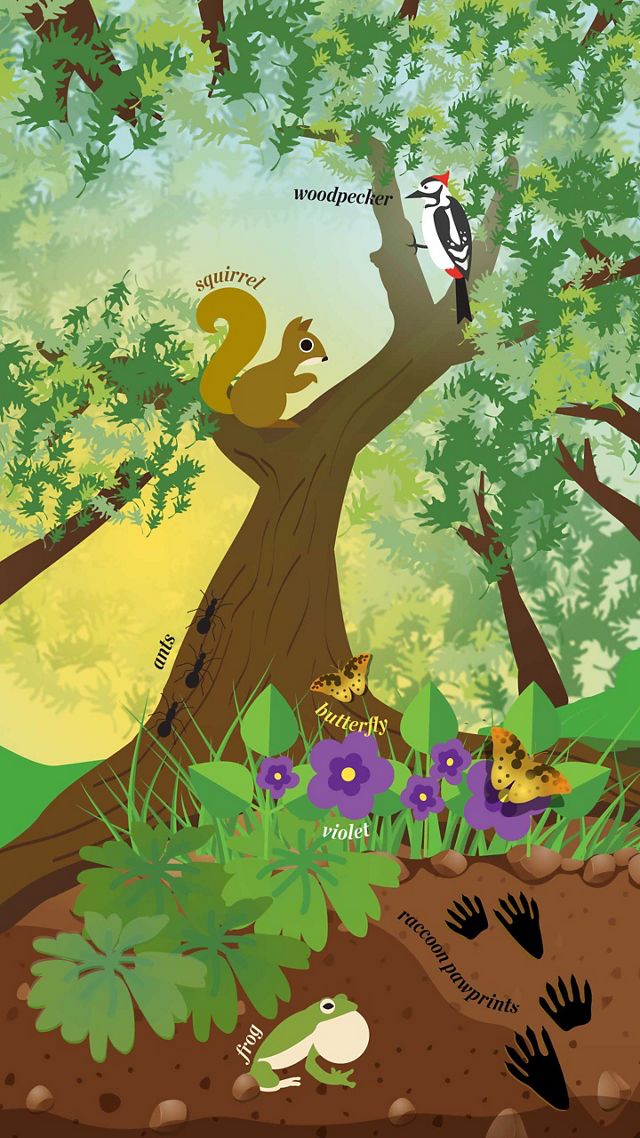
Connecting with Nature as a Family
When you are curious about something, you might turn to the internet for answers. That’s just what Stacy and her family did from their home in Fayette County when they were curious about butterflies. In their search, they happened upon the Children of Indiana Nature Park’s website, where they found resources about plants and animals, including the pollinator curriculum. The pollinator curriculum sparked a new idea for their family.
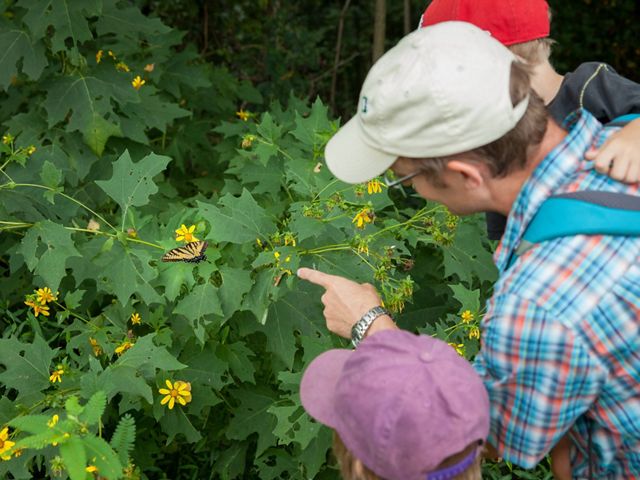
Stacy’s family knew you didn’t need to travel far to explore and connect with our natural world. Nature can be found right in our own backyards.
“Watching them became a cool little project that sparked a huge interest in different wildlife habitats,” said Stacy about her family’s study and observation of butterflies. The family also decided to raise monarch butterflies, which brought the wonders of nature into their home.
“Nature means a ton to my family, we have a [fish] pond that made its own ecosystem, it brought frogs and turtles and my kids love catching the frogs and building them little frog houses,” she said.
Thank you to Stacy and her family for being such enthusiastic backyard nature explorers. You are an inspiration!
And if your family is ready to leave your backyard and explore our state’s great natural areas, the Children of Indiana Nature Park can help with that too. Find nature near you!
Quote
“Connecting with nature is a huge part of our family time. We spend a lot of time at nature reserves and vacation to a lot of national parks.”
Location
The Children of Indiana Nature Park is located on the Cope Environmental Center property in Centerville, Indiana.
Address
1730 Airport Road
Centerville, IN 47330
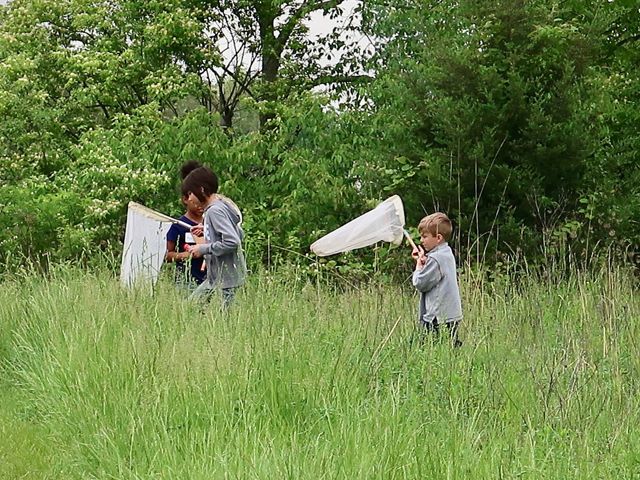
Hours
Open from dawn to dusk every day.
Importance of Nature for Kids
Studies show that children need nature to be healthy. Kids who spend time outdoors are more physically fit, less stressed, more confident and more creative. The risk of nearsightedness is reduced for kids who play outdoors. Dirt has been shown to be beneficial for the health of our youth. Most importantly, nature is fun to explore!
Want more information on the benefits of reconnecting kids and nature? Check out the Children & Nature Network’s library of research.
For locations to get your kids outside, check out the map below, the IDNR website and TNC's preserves in Indiana.
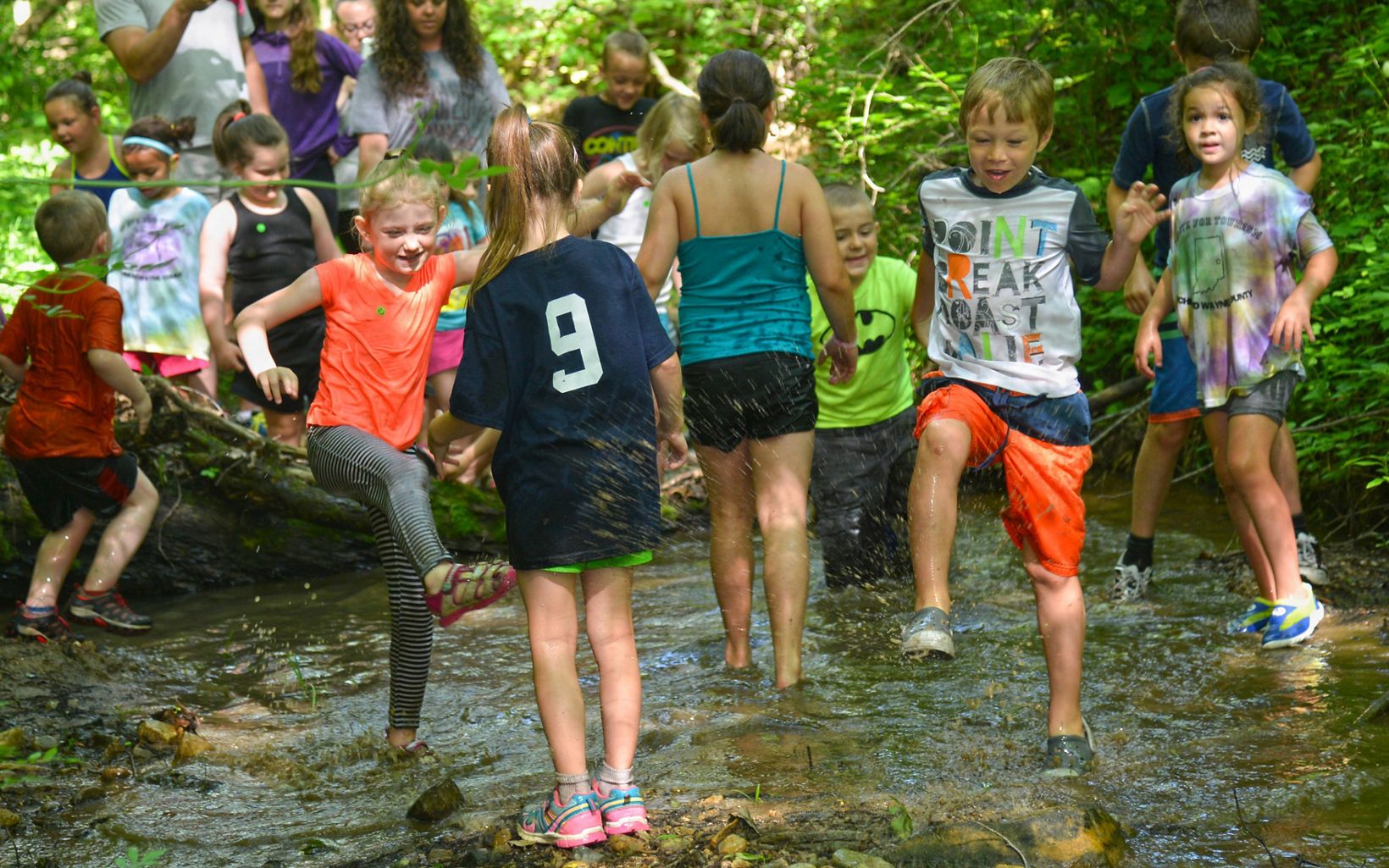
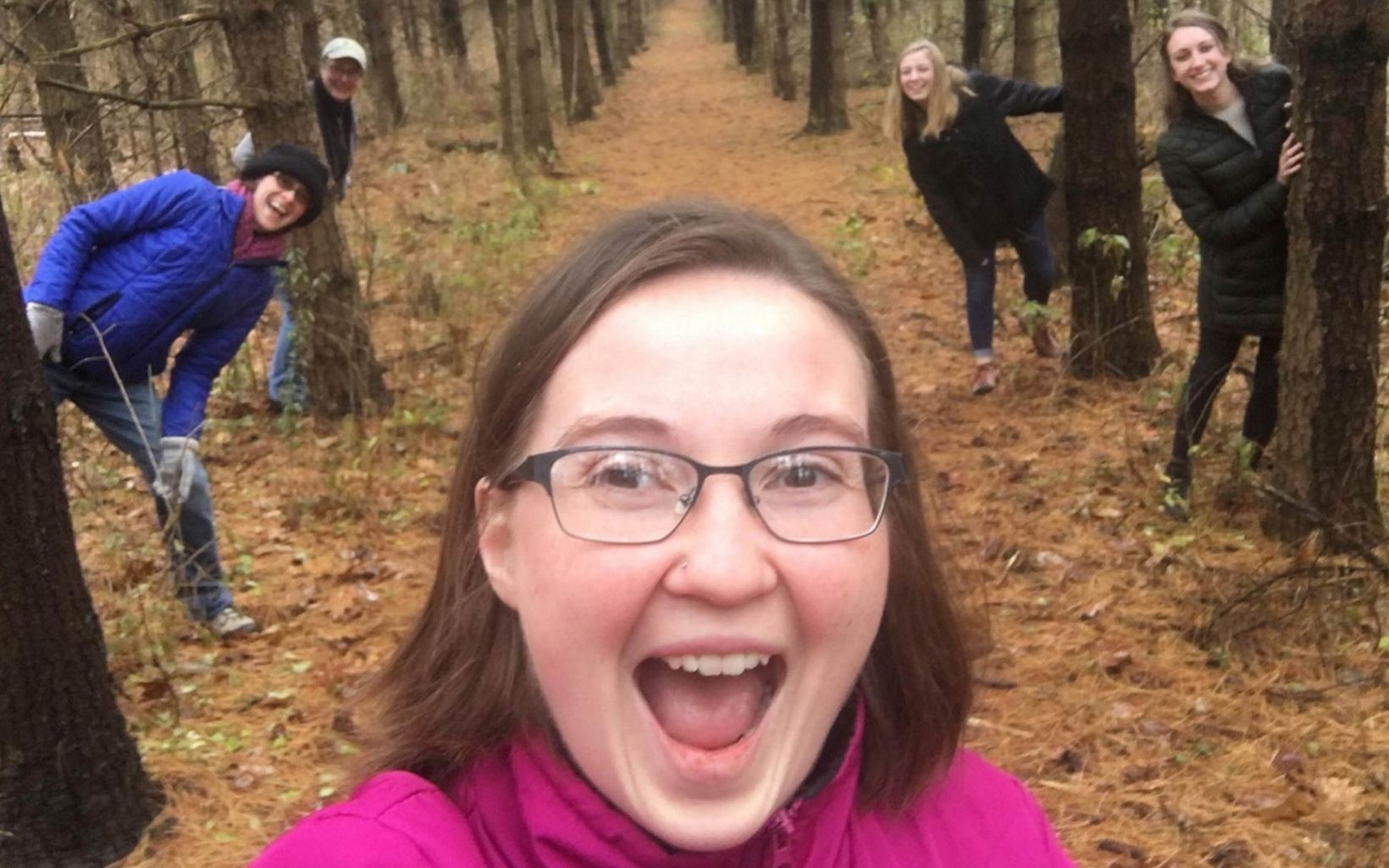
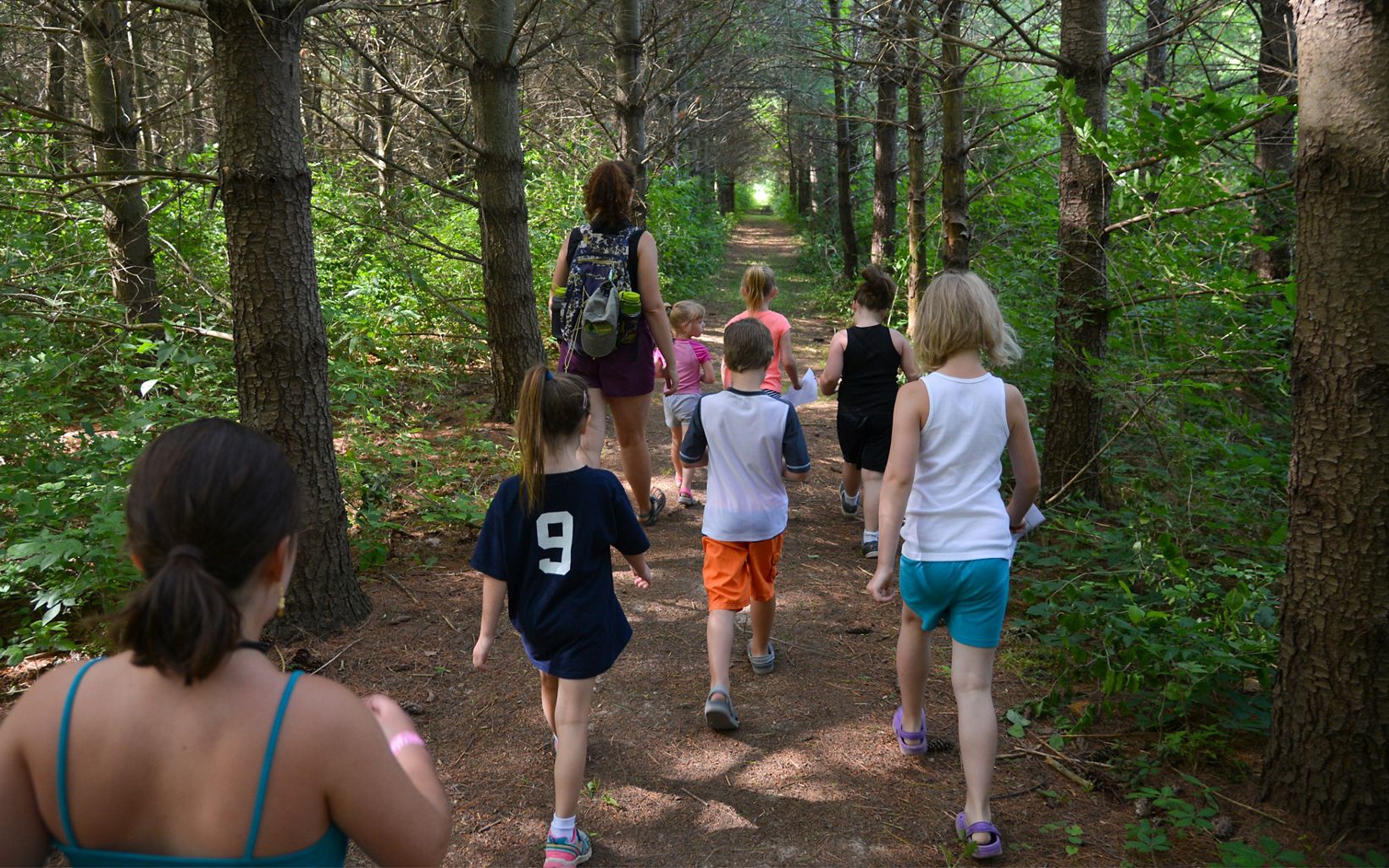



Summer Activities
Summer is fast approaching! Here are some ideas to get you started on your summer outdoor adventures. These activities are both fun and educational and for kids of any age. There is sure to be something that will capture the interests of everyone!
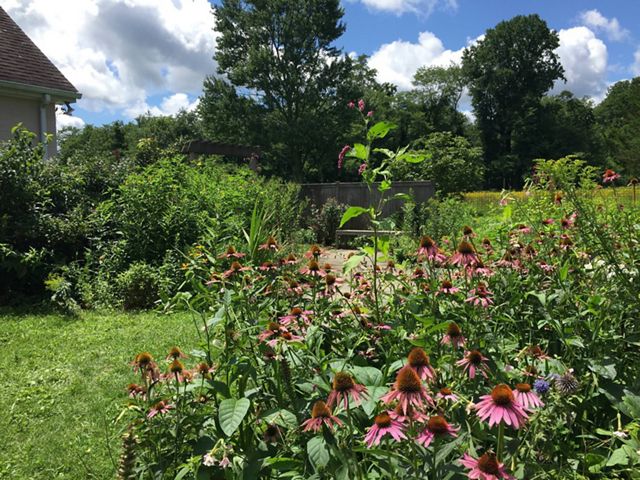
Plant a Garden!
Now that it’s warm, it’s the perfect time to get your hands a little dirty and plant some native species! Plant vegetables or see what kind of pollinators you can attract with different flowers.
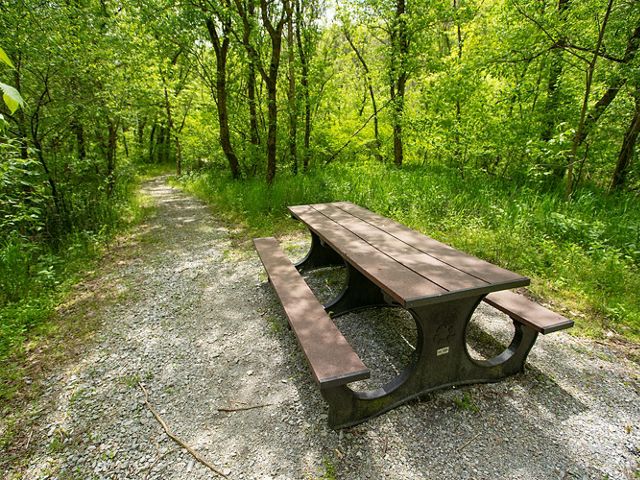
Enjoy a Meal Outdoors
Pack up a lunch and head to your local nature park or a nearby green space.
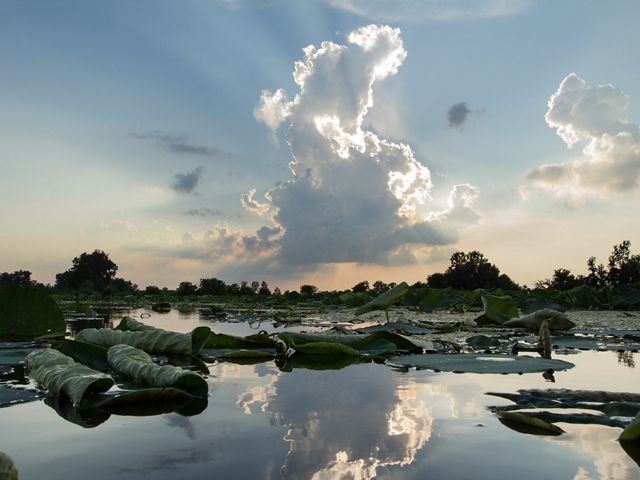
Watch the Clouds
What shapes do you see? Do any of them look like your favorite animal? Create a story about the clouds and their shapes!
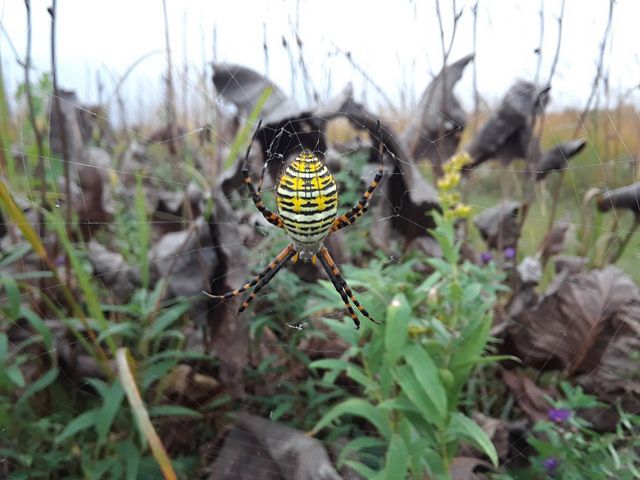
Take Pictures in Nature
Go outside and observe your surroundings. Does anything stand out to you or catch your eye?
Nature Center Network Find a nature center near you!
Community Science Activities
Looking for something to do that's helpful to the science community? Try some community science! Not only will you learn all about each of the subjects for these projects but you'll also be helping scientists track and record data.
eBird
eBird is a year-round community science project through to Cornell Lab of Ornithology. You can submit birds you see to their database to help you find more birds, keep track of what birds you find, explore sightings from around the world and contribute to science and conservation!
NestWatch
NestWatch nationwide nest-monitoring program. It tracks the status and trends in bird reproduction, and you watch nests! This easy and fun community science project asks you find a nest, monitor it and report what you see to NestWatch in real time. It helps researchers to understand and study birds.Project
FeederWatch (April – November)
Project FeederWatch is a winter community science project that surveys birds visiting feeders in backyards, nature centers and other locations in North America. These bird counts let you see what is happening in your own backyard and helps scientists track long-term trends in bird distribution and abundance. Project FeederWatch is through the Cornell Lab of Ornithology.
FrogWatch USA
FrogWatch USA is through the Association of Zoos & Aquariums. To participate, individuals, families and groups observe and report frog and toad vocalizations February –August. It is a chance to learn about wetlands and toads and frogs in your communities.
Budburst
Budburst is sponsored by the Chicago Botanic Garden and is a way to report flowering times of local plants. Community scientists report observations of plant lifecycles to help researches and horticulturists understand more about how plant species and ecosystems respond to changes in climate locally, regionally and nationally. Allseasons are valuable so you can participate at any time of year.
Great Lakes Early Detection Network
GLEDN is an invasive species early detection and warning system for the Great Lakes region. It was developed with funding from the National Park Service and is part of the Great Lakes Restoration Initiative. It is an online tracking systems that collects invasive species reports from casual observers anduses the reports to project the Great Lakes region.
Tick Insiders
Tick Insiders is a citizen science project to improvethat prevention, diagnosis and treatment of tick-borne diseases in Indiana. This project helps scientists better understand the risks of tick-borne diseases and can help improve healthcare for Hoosiers.
Report INvasives
Report INvasives is a website hosted by the Purdue College of Agriculture and the Indiana Invasive Species Council. Community scientists report sightings of invasive plant and animal species they see in Indiana and the experts take it from there. The website helps you learn about the harm invasive species can do and how to identify them.
Partner Parks
The Children of Indiana Nature Park is connecting children with our natural world. Located in Wayne County, the Park may be too far for some people to visit. This is why partner parks throughout the state are teaming up with us! We want kids to be able to see the land they “own” with their Nature IN-Deeds. These parks will allow kids a closer-to-home and personal nature connection.
Partner Parks are green spaces throughout Indiana with land dedicated to Indiana youth. Just as the Children of Indiana Nature Park has Nature IN-Deeds, so do our partner parks. In addition to deeded land, there are trails to explore and curriculum to connect knowledge and senses to the land.
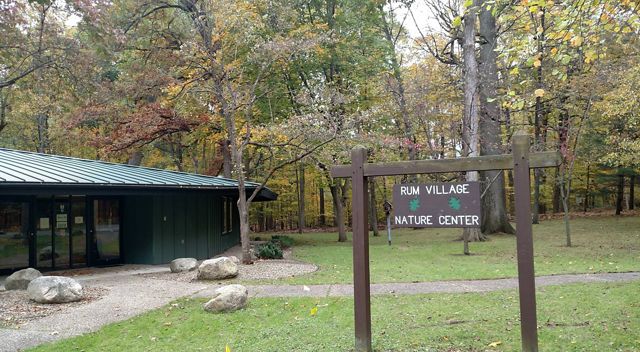
Rum Village Park
Near the heart of South Bend is Rum Village Park. This 160-acre area is a wildlife haven and offers hiking and biking trails, picnic areas and a place to escape to one of the nicest woodlands in the area. The Rum Village Nature Center invites parents and teachers to help children claim their deed to a piece of land in Rum Village Park. The Nature IN-Deed is an invitation for you to learn about the land—the pond or forest habitat, the creatures that live there—and how to care for your land. Once you have your deed, find your spot in the Park! Walk along the Indian Trail to find your spot in the forest. To find your spot near the vernal ponds, take the Spicebush Trail.
Rum Village Park has a unique type of habitat, known as a vernal pond. The word vernal means spring time, so that tells us when these wetlands are full of water, and life. Frogs, toads and salamanders use these ponds in spring, when they are laying eggs. By the time they have gone from egg, to larva, to adult, the ponds are drying out. But that’s OK, since the young amphibians are now developed enough to hop or crawl away into a different wetland, or suitable location.
Rum Village Park is also home to an ecosystem known as mixed deciduous forest. This ecosystem formerly covered much of the eastern United States. We are privileged to have this living vestige of that great forest within the city limits of South Bend. It’s home to 25 different species of trees, with many of them being over 150 years old. And it’s not just trees that thrive at Rum Village. Wildflowers, mushrooms and ferns, reptiles and amphibians, mammals and a 100-plus species of birds find a safe haven in Rum Village Park.
Interested in a lesson and field trip for your students to learn more about vernal ponds or mixed deciduous forest? Contact Garry Harrington gharrington@southbendin.gov and Hannah Teshka hteshka@southbendin.gov, naturalists at the Rum Village Nature Center.
Nature Skills
With nature as a classroom, there are many opportunities for young learners to demonstrate inquisitiveness, observe sequences or patterns, understand relationships and evaluate complex natural systems. These skills are valued in science, technology, engineering and math (STEM) fields.
Here are some ways to introduce nature to your classroom or visit nature with your students.
Curriculum
-
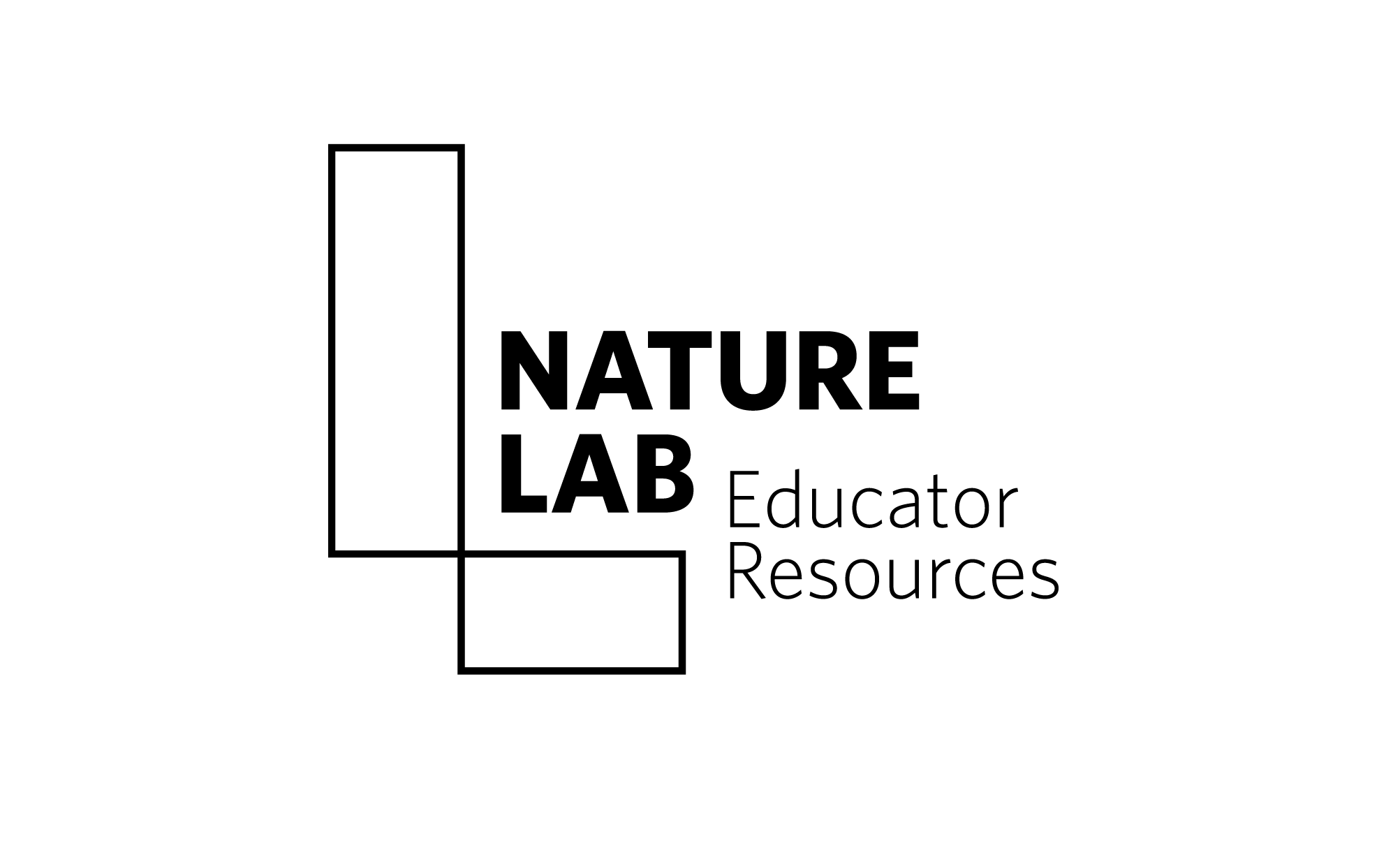
Nature Lab
These resources are aligned to The Nature Conservancy's research and designed specifically for a young audience and classroom use. Units are available for grades K-12 and include virtual field trip opportunities. Nature Lab
-
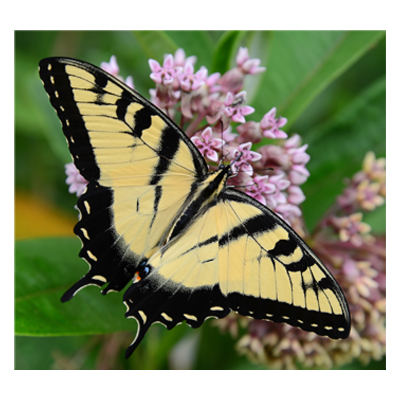
Pollinator Curriculum
The lessons in the pollinator curriculum include the life-cycle of butterflies, the relationship between plants and pollinators and includes a puzzle! Download Now
-
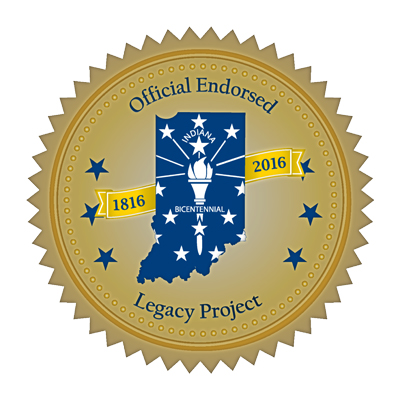
Nature Center Network Curriculum
These units are designed by a Cope Environmental Center educator. Habitats Happen (K-1), Our Land Rocks (2-3), and What’s the Dirt on Soil (4-5) will help students learn use their senses, make observations, and learn about Indiana's natural heritage. Learn More
-

Ball State University
Caring for our environment is not only a scientific endeavor. These units will help kindergarten, third, and sixth grade students explore social and community factors that also affect how we relate to our natural world. Learn More
-

Math Fun for Little Landowners
If you are in a math mood, check out these fun problems to solve using your Nature IN-Deed! Download Now
-

Benjamin Harrison Presidential Site Settlers and Surveyors Program
The Settlers and Surveyors program brings Harrison family history alive as students learn how pioneers decided to settle the land. Read More
-
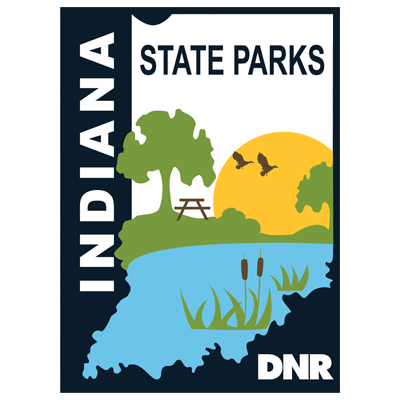
Indiana State Parks
The Indiana State Parks have developed an elementary school curriculum for exploring Hoosier history through the lens of Indiana State Parks. View Now
Funding Resources
Need funding to help get your class and students outside? The funding resources below vary from grants for outdoor field trips to planting a garden at your school. Whatever your project or goal is, there are ways to make it happen!

Indiana Nature Plant Society (INPS) Letha’s Fund
Indiana Nature Plant Society (INPS) Letha’s Fund is available for school and youth group trips to experience nature in an educational context. Youth-initiated activities that bring them in closer contact with nature are also eligible for funding. Preferred groups are those with the least access to experiences in the natural environment.
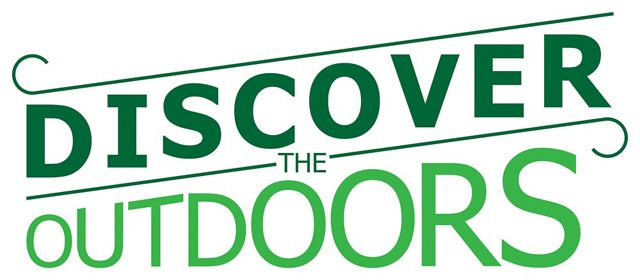
Indiana Natural Resources Foundation
The Discover the Outdoors Fund (Tom Heck Memorial Fund) can help pay for school field trips that include outdoor education and interaction with our natural world. Grants are available to assist public, private parochial or homeschool educators in taking field trips to Indiana State Parks and Reservoirs. These field trips engage students in learning about Indiana’s fish, forests, wildlife or natural habitats and their conservation.

Wild Ones’ Seeds for Education
Wild Ones’ Seeds for Education grant program can help teachers and students to enhance their schoolyards with butterfly gardens, nature trails, prairies, woodland wildflower preserves and similar projects. Cash grants under $500 are available for plants and seeds, and in-kind donations from Nursery Partners can help stretch these dollars. Wild Ones’ can also help locate experts and information specific to your area.
Subscribe to our Newsletter
Get more information about the Children of Indiana Nature Park and outdoor activities delivered right to your inbox.
